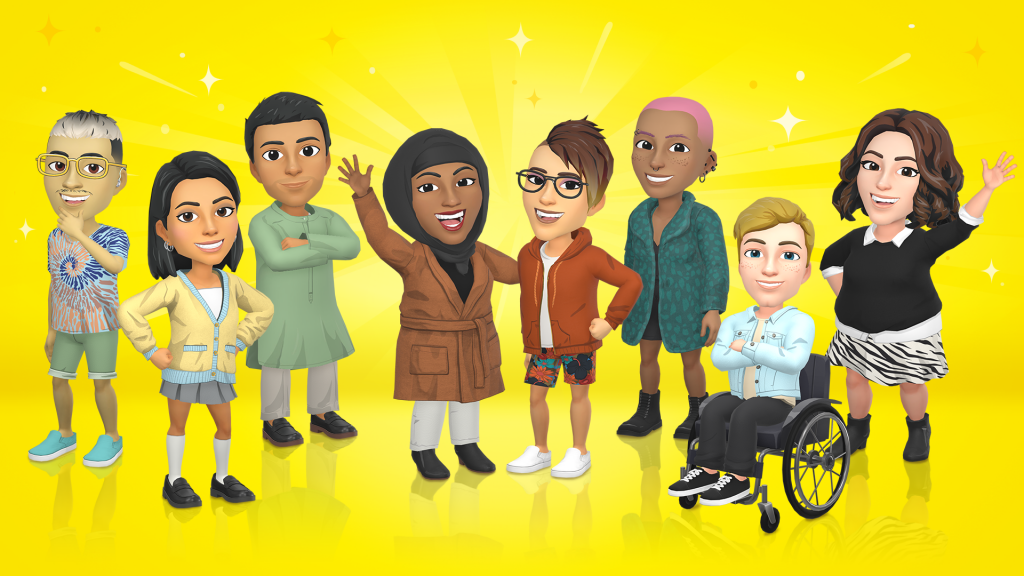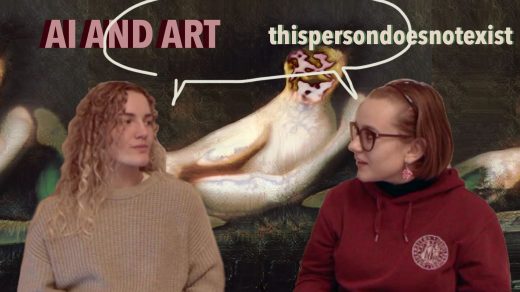Sometimes, when I want to share some photos or videos with my friends, I go on Snapchat. It’s an app build around the fact that you can share these photos and videos and they disappear after 24 hours. What becomes apparent when using the app is; you don’t see a profile picture of someone in the ‘’real world’’, but you get to see a personalized crafted avatar, or what they call it on snapchat, a bitmoji. I want to explore the bitmoji and what this bitmoji says about someone’s online identity.

The bitmoji is a way to form your own avatar on Snapchat. From making an avatar who just looks like yourself to making a weird alien like creature with absurd clothes on. Its all possible on this app. Creative freedom is at the centre of your bitmoji and the possibilities are almost endless. So what do you want to be? It’ s the question you maybe are confronted with when making this bitmoji. Do you want to be wearing the clothes you are most comfortable in? Or do you want to be wearing clothes you think other people will like the most? These are things to be thinking about when crafting ‘’yourself’’.
In “’The Presentation of Self in the Online World’: Goffman and the Study of Online Identities.” , Liam Bullingham writes
“The avatar has been seen as a form of mask in the online environment, and its appearance demonstrates the role or interests of its user.’’ (103)
The avatar can be like a mask. You can for example be a girl bitmoji, even though you are a boy. It’s the persona you want to hold up for the people you communicate with on Snapchat. I think it’s good that people can be and express whoever they are and do the things they want to, but there are sadly people who abuse this. Catfishing for example can be done through these bitmoji’s.
Even though you can be what you want, you can of course also make yourself look better.
“users prefer avatars that look better, are fitter and stand out more than they do in real life– a form of identity exploration, to be sure, but a somewhat one-sided version of it.” (103)
This is for example done by catfishers, but also just by almost everyone who wants to appear good on Snapchat. People with a receding hairline will stay away from the hairstyle that makes the bitmoji have a receding hairline. You can polish away everything that maybe makes you insecure in a way. Every little imperfection that makes you human is washed away by just an avatar on your screen. I think this is done so that you are less scared of what people might think of you and make conversation easier.
“While SL offers users avatar sets that reflect ethnic diversity, most users opt for an avatar that conforms to the ideal of beauty in American culture that is 20-something, toned/buxom and white.” (103)
According to the article the ‘’ideal of beauty’’ of the American culture is conformed. This of course can be done, but I am interested to if this also happens on Snapchat. I couldn’t find anything online that researched this, but in my experience people don’t change their skin colour, except for maybe a blue or purple character.
This brings me to the bitmoji as creative expression. Some users use the bitmoji as their canvas and they are creative while designing their bitmoji. Beside that you can create a perfect resemblance of yourself you can also just do whatever you like. Create an alien with green skin colour and a weird costume. It’s possible.
lastly I want to add that i found a blog that the outfit you choose on you bitmoji says about you. I thought it was funny and quite a generalisation of who you are based on what you choose and think is nice. I think after writing my blog and reading this one, i think that a bitmoji indeed says a lot about you. the blog says for example:
For some people it is really important what choices you make, and i think that is stupid. This is an example that people judge, even if its only an avatar on your Snapchat profile. I think this blog is an example of how you should not look at a bitmoji.
In the end there are a lot of possibilities and it’s whatever you are most comfortable with that you must go with. Resemble yourself because you like to show people a resemblance of who you are, and do this with or without the flaws you have, but be proud of the flaws you have. Create a sort oof monster that doesn’t look like you at all. Make something that makes you, you, and makes you proud, because in the end the bitmoji is about yourself and what you are comfortable with.
Bibliograhy
Bullingham, Liam, and Ana C. Vasconcelos. “’The Presentation of Self in the Online World’: Goffman and the Study of Online Identities.” Journal of information Science, vol. 39, no. 1, 2013, pp.101-112.




Well written and researched! I believe that the avatars, such as Bitmoji’s, say more about the way a person sees themselves (their self-perception) rather than their ‘real’ self.
Your blog post made me think about how creating avatars can be seen as a tool for self-exploration. Does this hair colour look good on me? This outfit? Or even way deeper, like how would you look like if you were of another gender?
I really liked how you used Bitmoji to show making avatars can be a fun way to express ourselves and also works as a kind of mask. It’s tempting to make a better version of ourselves, but also a bit sad that we feel we have to. I also liked that you ended on a good note, which is: whatever we choose, the most important thing is that we feel good, comfortable and proud of how we present ourselves.